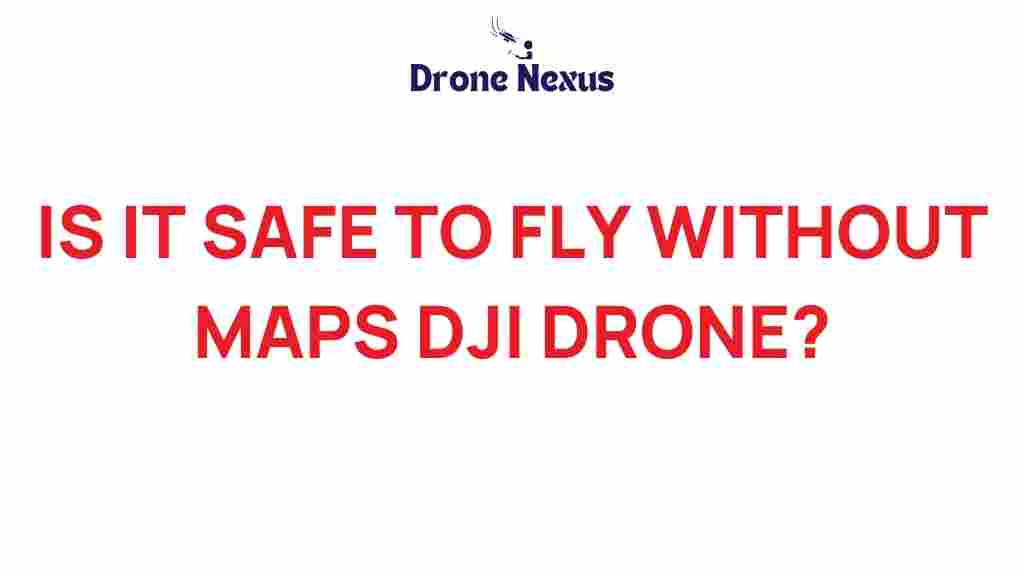DJI Drone: Navigating the Skies Without Maps
Flying a drone has become a popular hobby and an essential tool for many professionals. Among various brands, the DJI drone stands out for its cutting-edge technology, ease of use, and impressive features. However, one question often arises: is it safe to fly your DJI drone without maps? In this article, we’ll explore the safety and practicality of flying a DJI drone without preloaded maps, along with tips, troubleshooting advice, and best practices.
Understanding the Importance of Maps in Drone Navigation
Before diving into whether you can fly a DJI drone without maps, it’s crucial to understand the role maps play in drone navigation. Maps help provide:
- Geographical awareness: Maps give pilots a clear picture of the terrain, including obstacles and restricted areas.
- Flight planning: Preloaded maps allow for better flight planning, helping pilots avoid no-fly zones.
- Real-time data: Many drones use maps to track their location and maintain stability during flight.
For these reasons, going mapless can introduce challenges. However, it is not impossible. Let’s explore how to safely navigate your DJI drone without relying on maps.
Step-by-Step Process to Fly a DJI Drone Without Maps
If you choose to fly your DJI drone without maps, follow these steps to ensure a safe flight:
1. Perform a Pre-Flight Check
Before you take off, ensure your drone is in optimal condition:
- Check battery levels and ensure they are fully charged.
- Inspect propellers for any damage or wear.
- Make sure the camera and gimbal are functional.
- Update your drone’s firmware if necessary.
2. Choose a Clear and Open Area
Flying in a wide-open space reduces the risk of colliding with obstacles. Look for places such as:
- Parks
- Open fields
- Beaches
3. Utilize GPS and IMU
Your DJI drone is equipped with GPS and an Inertial Measurement Unit (IMU). These systems can help maintain stability and location tracking even when maps are not available. Here’s how:
- Ensure that the GPS signal is strong before takeoff.
- Calibrate the IMU if the drone indicates it’s necessary.
4. Keep Visual Line of Sight
Always keep your DJI drone within your visual line of sight. This practice helps you maintain awareness of your environment and navigate safely without maps.
5. Use the DJI Fly App
The DJI Fly app provides essential flight information, including altitude, speed, and battery life. Even without maps, the app can help you monitor your drone’s performance.
6. Establish a Flight Plan
Before taking off, create a basic flight plan. Decide on:
- The area you’ll fly in
- The altitude you’ll maintain
- Any specific maneuvers you want to perform
7. Monitor Weather Conditions
Weather conditions can significantly impact your flight. Make sure to check:
- Wind speed
- Precipitation
- Temperature
Flying in strong winds or rain can be dangerous, especially without maps for navigational aid.
Troubleshooting Tips for Flying Without Maps
Even with preparation, issues may arise while flying your DJI drone without maps. Here are some common problems and their solutions:
1. Loss of GPS Signal
If your drone loses GPS signal, it may become unstable. To address this:
- Land the drone immediately in a safe area.
- Wait for the GPS signal to reestablish before taking off again.
2. Orientation Issues
Without maps, you may lose track of your drone’s orientation. If this happens:
- Activate the ‘Return to Home’ feature if available.
- Use the camera view to visually orient the drone.
3. Low Battery Warning
If you receive a low battery warning:
- Immediately bring the drone back to your location.
- Avoid flying further away until it is fully charged.
4. Unfamiliar Terrain
Flying in an area you’re unfamiliar with can be risky. To mitigate this:
- Take time to observe the area before flying.
- Consider using a scouting drone to map the area visually.
Best Practices for Safe Flying
When flying your DJI drone without maps, adhering to best practices is essential for safety:
- Know the laws: Familiarize yourself with local regulations regarding drone flights.
- Limit distance: Keep your drone within a reasonable distance to maintain control.
- Practice makes perfect: Regular flying will improve your skills and confidence.
- Stay informed: Join online forums or groups that focus on DJI drones for tips and updates.
For more information about drone regulations and safety tips, visit Drone Regulations.
Conclusion
Flying your DJI drone without maps is not only possible but can also be a rewarding experience if done safely. By performing pre-flight checks, utilizing GPS and IMU, and maintaining visual line of sight, you can navigate the skies with confidence. Remember to prepare for potential issues and follow best practices to ensure a smooth flight. Whether you’re a seasoned pilot or a beginner, understanding the nuances of flying without maps will enhance your drone-flying experience.
For more tips on enhancing your drone flying skills, check out our comprehensive guide here.
This article is in the category Safety and created by DroneNexus Team
